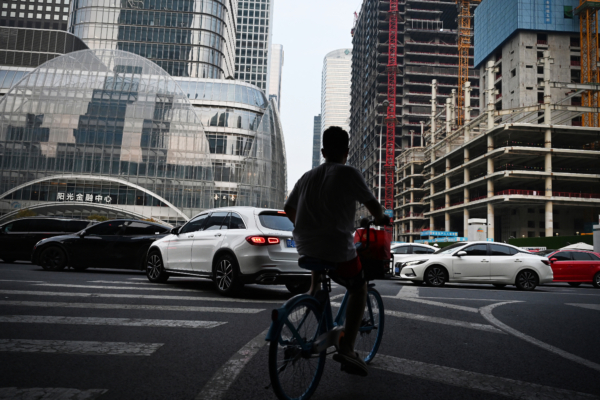China’s second-quarter economic growth fell far below expectations, marking its poorest performance in five quarters. This indicates that efforts to stimulate consumption have not been effective, with long-standing stagnant real estate and unstable employment suppressing domestic demand, resulting in a fragile economic recovery that is struggling to make progress.
Official data from the Chinese government showed that the country’s Gross Domestic Product (GDP) grew by 4.7% from April to June, the slowest pace since the first quarter of 2023. This figure was lower than the 5.1% forecast by analysts surveyed by Reuters and represented a slowdown from the 5.3% growth in the previous quarter.
Of particular concern is the consumer sector, where deflationary pressures have led to price cuts in various goods such as cars, food, and clothing, resulting in the lowest retail sales growth in 18 months.
However, skepticism has always surrounded the accuracy of China’s official economic data. For instance, the annual GDP figures in China consistently align closely with the officially set targets, leading economists, analysts, and investors to question the authenticity of the Chinese government’s economic data.
The real estate crisis in China deepened further in June this year, with new home prices experiencing the fastest decline in nine years. In the first half of this year, new construction starts and real estate investments fell by 23.7% and 10.1% respectively, impacting consumer confidence and limiting local governments’ ability to raise new funds through land sales.
Lynn Song, Chief Economist for ING Bank in Greater China, remarked, “Overall, the disappointing GDP data suggests that the path to achieving the 5% growth target remains challenging.”
She added, “The negative wealth effect from declining real estate and stock prices, along with cost-cutting measures across industries leading to sluggish wage growth, is dragging down consumption, shifting people from major spending to basic ‘eating, drinking, and entertainment’ theme consumption.”
Xu Tianchen, a senior analyst at the Economist Intelligence Unit (EIU), expressed concern over the 4.7% growth rate, highlighting that it emerged from a low point in the second quarter of 2023.
Xu Tianchen stated, “We are particularly worried about the decline in mid- to high-end consumption, with many non-essential expenditures like jewelry and automobiles decreasing. This could be due to recent deleveraging efforts and impact on high-income industries further hindering employment and income prospects.”
Louise Loo, Chief Economist at Oxford Economics, noted in a report, “We estimate that the month-on-month decline in non-essential retail spending is the largest since the Shanghai lockdown in April 2022.”
Analysts anticipate that debt reduction and boosting consumer confidence will be key topics at the CPC Third Plenum this week. However, addressing one issue may potentially worsen another problem.
The Chinese authorities aim to achieve economic growth of around 5.0% in 2024, but many analysts believe this target may be challenging to achieve, necessitating more stimulus measures.
Xiaojia Zhi, an economist at BNP Paribas, remarked, “The second-quarter data is disappointing, and the government needs to consider larger policy support to achieve the annual growth target of around 5%.”
She also noted that with the increasing likelihood of ‘Trump 2.0’, there is a risk of a substantial decline in external demand, which could further impact China.
Former US President Trump has previously stated that if re-elected, he would impose more restrictive measures and consider tariffs exceeding 60% on Chinese imports.
The Chinese authorities aim to drive growth in China post-pandemic through the manufacturing and high-tech sectors. However, with many trading partners implementing trade barriers, this strategy faces increasing uncertainties.
If external demand significantly declines, coupled with weak domestic demand in China, maintaining normal economic operations may become more challenging.
Following the disappointing data release, both the Hong Kong and Chinese stock markets witnessed expanded losses, with the Hang Seng China Enterprises Index plummeting by 1.99%.
Despite claims by the National Bureau of Statistics in China that extreme weather and frequent floods contributed to the setback in second-quarter economic growth, they acknowledged that there are increasing challenges in the current economic landscape and insufficient domestic demand.
China’s economic growth has long been imbalanced, with industrial output far surpassing domestic consumption. With a stagnant real estate sector and increasing local government debt, the risk of deflation is escalating.
Earlier data released this month revealed that China’s exports grew by 8.6% year-on-year in June, while imports unexpectedly contracted by 2.3%, indicating manufacturers are advancing orders to anticipate trade partner tariffs.
Zhao Peng, Senior China Strategist at ANZ Bank, remarked, “With the rise of trade protectionism, the outlook for the second half of the year does not favor China’s export-driven economic growth.”
Zhao Peng added, “Among all the monthly data released today, the weak retail sales are particularly noteworthy. The 2% year-on-year growth rate is significantly lower than the market’s forecast of 3.4%.”
He further noted that household consumption remains sluggish, with programs like ‘trade-in for new’ failing to stimulate consumption. Amid salary cuts and high youth unemployment rates, households are likely to remain cautious in their spending decisions.
While market expectations are high for the CPC Third Plenum, analysts believe the authorities may struggle to respond swiftly and effectively.
Harry Murphy Cruise, of Moody’s Analytics, commented, “While the case for reforms is compelling, it won’t be particularly thrilling. Significant policy shifts could be seen as an admission of failure and are likely to result in loss of face for the CPC.”
(Credit: References include reports from CNBC, Reuters, and Bloomberg News)

